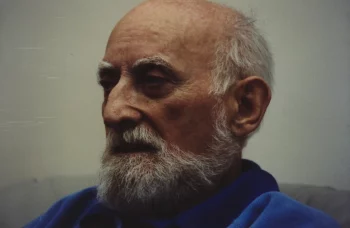During an attempt to make history, Amelia Earhart and her navigator Fred Noonan were circumnavigating the world in Earhart’s custom Lockheed model 10-E Electra. In July of 1937, though, the pair and the plane vanished. Since their last known signal was received, there have been numerous theories as to what happened to them ranging from the absurd to the plausible. Now, though, explorer Robert Ballard has set out to get to the bottom of the mystery and an old photograph may help him figure it out.
Ballard, now 77, has teamed up with Allison Fundis, another explorer, aboard the E/V Nautilus to tediously search for any signs of the Electra, Earhart, or Noonan. If Ballard successfully locates Earhart’s plane, it’ll be yet another impressive feat he’ll have accomplished. He was the man who found the Titanic and located the Bismarck, a Nazi battleship, so it seems that if anyone can do it, he might be just the guy. ‘It’s not the Loch Ness Monster; it’s not Big Foot,’ Ballard said to National Geographic. ‘That plane exists, which means I’m gonna find it.’
The last known transmissions from Earhart were received at 8:43 a.m. on July 2nd, 1937. Earhart radioed a US Coast Guard vessel off the coast of Howland Island, where Earhart and Noonan were expected to stop before embarking on the penultimate leg of the journey. Earhart and Noonan never got to Howland. There were, though, 57 more transmissions received by radio operators in the days following when Earhart should have landed. These could have come from the Electra had Earhart continued on her course and landed the plane on Nikumaroro, and small island southeast of Howland.

What makes this so interesting is a photograph of Nikumaroro taken by British officer Eric Bevington in October of 1937, just three months after Earhart’s disappearance. From the ocean, the photo shows the island on the left and the shipwreck of the S. S. Norwich City to the right. However, on the left side, just below the horizon line, there is an object sticking up from that has become known as ‘The Bevington Object.’ The photograph was revisited in 2010 by the International Group for Historic Aircraft Recovery, or TIGHAR, as part of the Earhart Project. After analysing the image, it was sent to the National Geospatial-Intelligence Agency, who had it looked at by an independent intelligence organization and it was determined that ‘The Bevington Object’ might just be a landing gear for a plane, one that could very well have belonged to the Electra.
To thicken the plot, in 1940, skeletal remains were found on Nikumaroro. At the time, it was determined to be male because of the long length of the arms; however, when TIGHAR analysed images of Earhart, they determined that her arms were in fact longer than most females. Moreover, the remains were reportedly found by a woman’s mirror, buttons like those found on flight jackets, and the kicker: a jar of anti-freckle cream favoured by Earhart. If this is true, it would support the theory that Earhart landed her plane but perished on the deserted island.
The team of explorers have set out in search of Earhart using technology that has never been used in the specific area they’re looking. Working with TIGHAR, the team is receiving funding from the National Geographic Society, which is paving the way for Ballard and team to have access to the state-of-the-art equipment. Using drones, sonar, an autonomous surface vehicle, and two remotely controlled underwater vehicles equipped with high-definition cameras capable of going 20,000 feet below sea level, the E/V Nautilus looks to have the best shot yet at retrieving what’s left of Earhart’s plane and clues as to what happened to her.
In October, the findings from the E/V Nautilus will be aired on National Geographic and surely Ballard and his teammates expect to make history. Whatever their findings are, though, you can guarantee the conspiracies around one of the most famous disappearances ever will continue to thrive.





